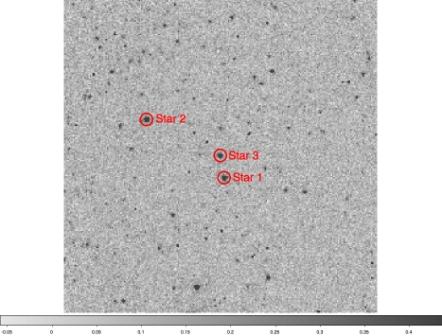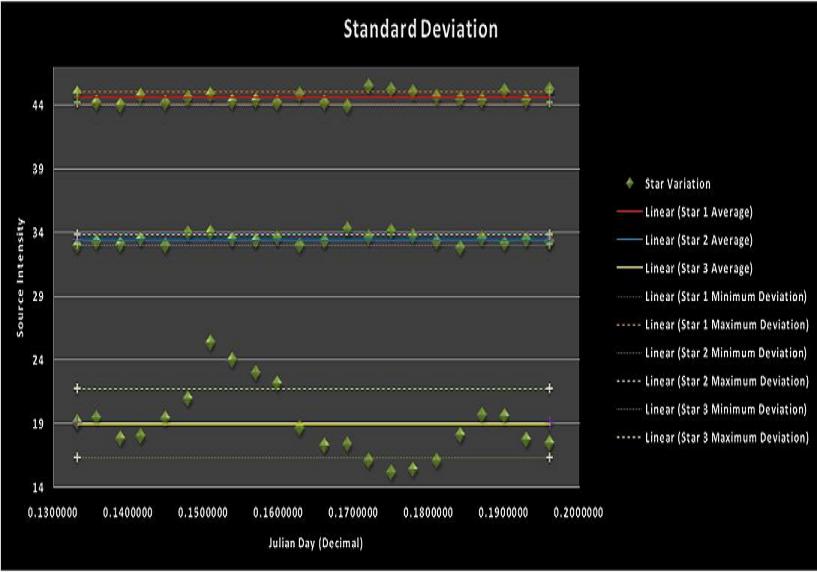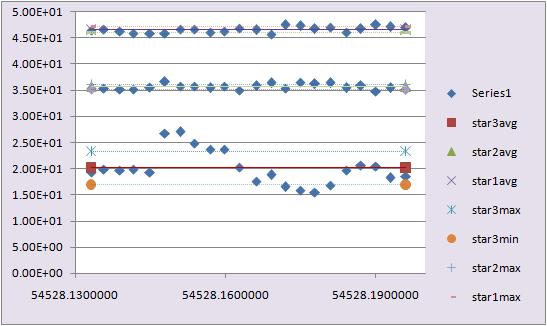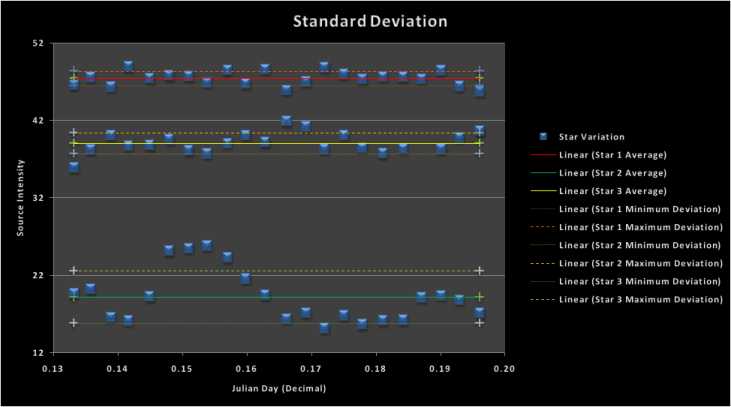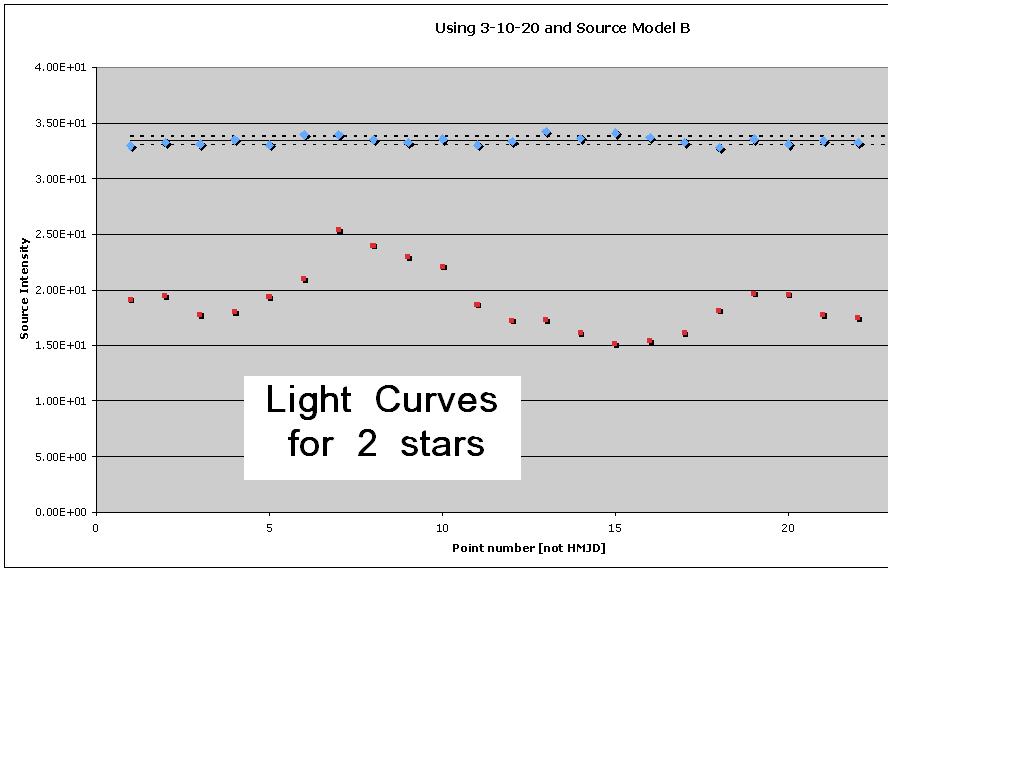Variability of the Mid-IR Sky Current Research Activities
Contents
- 1 Variability of the Mid-IR Sky Proposal
- 2 Variability of the Mid-IR Sky Summer visit
- 3 Generating Light Curves - APT and Excel
- 4 Individual School Pages
- 5 Summer Discussion Topics
- 6 Other items
Variability of the Mid-IR Sky Proposal
Here is the link to our Spring 2010 proposal http://coolcosmos.ipac.caltech.edu/cosmic_classroom/teacher_research/r4-variab/variabProposal.pdf
Variability of the Mid-IR Sky Summer visit
We will be arriving on Thursday Aug 5, departing Aug 9 in hopes of working the three full days of Aug 6, 7 and 8. CLICK HERE for details
Generating Light Curves - APT and Excel
You can find info to help you practice using APT to generate light curves on this page.
Standard Deviation for Dummies
Our Astronomers said it would be important for us to understand standard deviation. We found the button on Excel that calculates it for us, but doesn't really explain what it is. Here's an explanation and example.
Standard deviation is a statistical measure of spread or variability. The standard deviation is tells you how closely the data are clustered around the average. We want to use the aperture and background subtraction settings that give us the smallest standard deviation for a star that is not varying. Our varying stars will of course have large standard deviations because they ARE varying.
Standard Deviation standard deviation formula
where Σ = Sum of X = Individual score M = Mean (average) of all scores N = Sample size (Number of scores)
Example: Find the Standard deviation of 3,2,1,1,and 3
Step 1: Calculate the mean (average) and deviation.
| X | M | (X-M) | (X-M)2 |
| 3 | 2 | 1 | 1 |
| 2 | 2 | 0 | 0 |
| 1 | 2 | (-1) | 1 |
| 1 | 2 | (-1) | 1 |
| 3 | 2 | 1 | 1 |
Step 2:Find the sum of (X-M)2 1+0+1+1+1 = 4
Step 3:N = 5, the total number of values.Find N-1. 5-1 = 4
Step 4:Now find Standard Deviation using the formula. √4/√4 = 1
Individual School Pages
Communicating on Wiki!!!
Wiki will tell you when anyone makes an edit or comment to any page if you
-log in, click on my preferences, put your whole name in for your signature if you want, check off all of the boxes at the bottom to turn on the email function
-go to the pages you want to "watch" and click on on the Watch tab, you'll get an email if there is a change to these pages
-watch your practice page and everyone elses practice pages for now so you know any of us make a comment or put up something new
-Please make comments using the discussion tab on anything and everything right now!
-if you feel the urge to make the comment on the actual page, that's ok for any pages under Variability of the Mid IR Sky seeing that these are our pages, but if you comment on the main coolwiki, use the discussion page.
Lincoln-Way North High School in Frankfort, Illinois

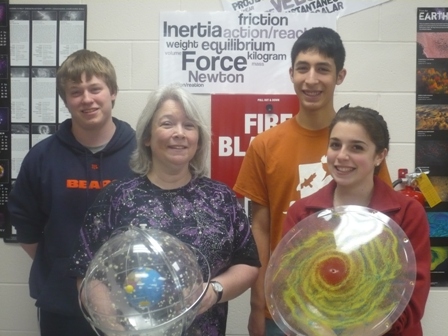

Teacher - Peggy Piper - Students - Joey R. - Rebecca R. - Justin C.
Here are our light curves with standard deviations for the three test stars using Source Model B.
From top to bottom in each graph, they are stars #1, #2, and #3.
Mrs. P Question to you - which aperture background should we choose? Why?
Joey's Data for Aperture 3, Background 10 20
Rebecca's Data for Aperture 5, Background 5 10
Joey's Data for Aperture 10, Background 12 20
CLICK HERE for our working data
LWN Student Practice Pages
A Present for Mr. DeCoster from Mrs. Piper
I broke my mini tripod, so these are not so carefully balanced on all sorts of odds and ends!
Niles West High School in Skokie, Illinois
Teacher - Rich DeCoster
Student - Alexander
Student - Aneesh
Here are two light curves by Alex
Niles West Student Observing Pages
Niles West Student Practice Pages
North Middle School, Great Falls, Montana
click on title above to get page to edit
Teacher - Beth Thomas
Student - Drew B.
Student - Dallas F.
Summer Discussion Topics
How Does Spitzer Work
So let's start looking into the details of how Spitzer works! I put a few subheadings below, we can add more as we go. Lets start with the mission. How 'bouts each of you come up with some facts about the history, the purpose, the reason Spizter was launched. There's plenty of info and links on this coolwiki.
Rules:
- come up with and list 5 facts (not here, on History/Mission page!)
- you can't repeat someone else's fact (if you do this soon, its easier - poor Joey's out of town til Sat!)
- once facts are up, come up with several questions about someone else's facts and post them below the fact (make sure you hit the signature button so we know who's talking)
This time we'll talk right on the topic page instead of the discussion page.Click on History/Mission to see how I started. Ha - I took the easy ones!
History/Mission
Physical Aspects
IR Channels
Variable Stars
Our Glorious Leaders
Most Definitely a couple of Cool Dudes
Here is link to ‘‘DARK MATTER’’ IN ACCRETION DISKS by Steve Howell and Don Hoard that is of interest
Other items
This is Rich. I hope I am not causing confusion. It is 11:15 am CST on Friday Jan. 22, 2010. I am trying to see what this does, since I have "editing" status here. Is this something we use instead of email, or is it a place to create documents that we edit together? Rich ps-Should something like this be in the "discussion" tab rather than the "article" tab?
Hi Rich - no, you're not causing confusion, you're doing it exactly right! These pages under "current research activities" are really sort of "shared white boards". The other half of the wiki (under "research tools") are more articles, and in those cases, yes, questions should go into the discussion pages. I copied some headers in here, but please see some of the "current research activity" pages for the other current teams to see how they are using their pages. (e.g., cg4's page) Oh, and you can use this for whatever you want -- proposal preparation, conversation, sharing plots, brainstorming, etc. --Rebull 13:12, 22 January 2010 (PST)
